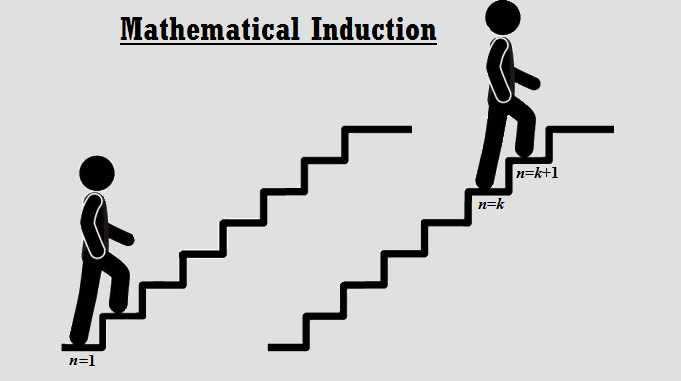
What is Mathematical Induction with example?
Introduction:
What is Mathematical Induction? In mathematics, mathematical induction is a very powerful tool. It is a technique for proving statements that hold to all natural numbers. In other words, mathematical induction is a strategy for proving natural-number results or establishing statements.
With the help of the mathematical induction method, we can also prove the famous Two-Color Theorem, which states that “If a map is made by only straight lines extending infinitely in either direction; we can colour this map using only two colours such that no two regions with the same boundary have the same colour.”
Definition of mathematical induction:
Mathematical Induction is a method of proving that a statement, a formula, or a theorem is true for all natural numbers. We can prove that the statement P(n) is true for all using the mathematical induction technique, where P(n) is a statement involving the natural number n and
is a fixed integer.
Mathematical Induction Steps:
The Mathematical Induction method involves two steps to prove a statement, as shown below:
♦ Step 1 (Basic of Induction or Base step):
In this step, we prove that the given statement is true for the initial value. For this, we find an initial value for which the statement is true by proving that the statement is true when n = initial value.
That is, in this step, we prove that is true i.e. P(n) is true for
.
♦ Step 2 (Inductive step):
In this step, we assume that if a statement is true for the kth iteration (or number n=k), it is also true for the (k+1)th iteration (or number n=k+1). We actually break this step into two parts:
(i) Inductive Hypothesis: Here, we assume that P(k) is true.
(ii) Inductive Step: Here, we try to prove that P(k+1) is also true by using the Inductive Hypothesis (that is, the truth of P(k)).
Read also all topics for Mathematical Induction:
- Principle of Mathematical Induction
- Examples – Mathematical Induction Proofs for Summation Identities
- Examples – Mathematical Induction Proofs for Divisibility Statements
- Examples – Mathematical Induction Proofs for Inequalities
(Source – Various books from the college library)
Copyrighted Material © 2019 - 2024 Prinsli.com - All rights reserved
All content on this website is copyrighted. It is prohibited to copy, publish or distribute the content and images of this website through any website, book, newspaper, software, videos, YouTube Channel or any other medium without written permission. You are not authorized to alter, obscure or remove any proprietary information, copyright or logo from this Website in any way. If any of these rules are violated, it will be strongly protested and legal action will be taken.

Be the first to comment